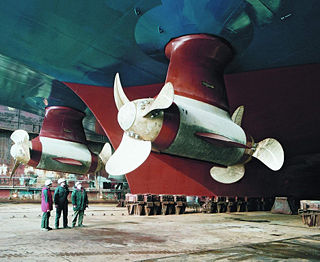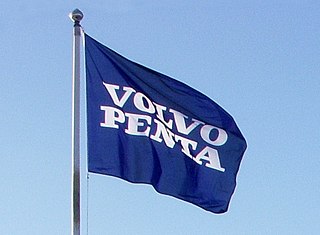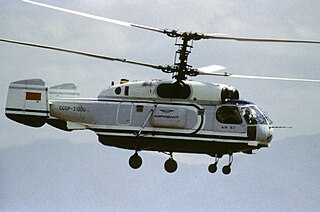
An outboard motor is a propulsion system for boats, consisting of a self-contained unit that includes engine, gearbox and propeller or jet drive, designed to be affixed to the outside of the transom. They are the most common motorised method of propelling small watercraft. As well as providing propulsion, outboards provide steering control, as they are designed to pivot over their mountings and thus control the direction of thrust. The skeg also acts as a rudder when the engine is not running. Unlike inboard motors, outboard motors can be easily removed for storage or repairs.

A runabout is any small motorboat holding between four and eight people, well suited to moving about on the water. Characteristically between 20' to 35' in length, runabouts are used for pleasure activities like boating, fishing, and water skiing, as a ship's tender for larger vessels, or in racing. Some common runabout types are bow rider, center console, cuddy boat and walkaround.

A motorboat, speedboat or powerboat is a boat that is exclusively powered by an engine.
A trolling motor is a self-contained unit that includes an electric motor, propeller and controls, and is affixed to an angler's boat, either at the bow or stern. A gasoline-powered outboard used in trolling, if it is not the vessel's primary source of propulsion, may also be referred to as a trolling motor. Trolling motors are often lifted from the water to reduce drag when the boat's primary engine is in operation.

An azimuth thruster is a configuration of marine propellers placed in pods that can be rotated to any horizontal angle (azimuth), making a rudder unnecessary. These give ships better maneuverability than a fixed propeller and rudder system.

Volvo Penta was founded as Penta in 1907 with the production of its first marine engine, the B1. The Penta company soon became an established internal combustion engine manufacturer, which in 1927 delivered the engine for Volvo's first passenger car.

Contra-rotating, also referred to as coaxial contra-rotating, is a technique whereby parts of a mechanism rotate in opposite directions about a common axis, usually to minimise the effect of torque. Examples include some aircraft propellers, resulting in the maximum power of a single piston or turboprop engine to drive two propellers in opposite rotation. Contra-rotating propellers are also common in some marine transmission systems, in particular for large speed boats with planing hulls. Two propellers are arranged one behind the other, and power is transferred from the engine via planetary gear transmission. The configuration can also be used in helicopter designs termed coaxial rotors, where similar issues and principles of torque apply.

A Z-drive is a type of marine propulsion unit. Specifically, it is an azimuth thruster. The pod can rotate 360 degrees allowing for rapid changes in thrust direction and thus vessel direction. This eliminates the need for a conventional rudder.

Mercury Marine is a marine engine division of Brunswick Corporation. Its main product is manufacturing and selling outboard motors. It also produces the MerCruiser line of sterndrives and inboard motors.

Elmer Carl Kiekhaefer was the owner of Kiekhaefer Mercury and Kiekhaefer Aeromarine and also a two-time NASCAR championship car owner.

The Kitchen rudder is the familiar name for "Kitchen's Patent Reversing Rudders", a combination rudder and directional propulsion delivery system for relatively slow speed displacement boats which was invented in the early 20th century by John G. A. Kitchen of Lancashire, England. It turns the rudder into a directional thruster, and allows the engine to maintain constant revolutions and direction of drive shaft rotation while altering thrust by use of a control which directs thrust forward or aft. Only the rudder pivots; the propeller itself is on a fixed shaft and does not.

An inboard motor is a marine propulsion system for boats. As opposed to an outboard motor where an engine is mounted outside the hull of the craft, an inboard motor is an engine enclosed within the hull of the boat, usually connected to a propulsion screw by a driveshaft.

The word Drascombe is a trademark that was first registered by John Watkinson who applied it to a series of sailing boats which he designed and built in the period 1965–79 and sold in the United Kingdom (UK). They comprised the Coaster, Cruiser Longboat, Dabber, Drifter, Driver, Gig, Launch, Longboat, Lugger, Peterboat, Scaffie, Scaith and Skiff, together with a few other one-offs. They have wide and deep cockpits, adaptable boomless rigs and high bulwarks.
From its inception in the late 1940s through about 1984, Wacanda Marine, Inc. was owned and operated by Forrest Collins, Colville, Washington. From 1984 to 1988, the company was owned by the Yakima Indian Nation, Wapato, Washington, although Mr. Collins managed the production

Mercury KG-7Q Super 10 Hurricane is an outboard motor built by Kiekhaefer Mercury during the years of 1950 through 1952.
BMW Marine GmbH was BMW's marine engine division. BMW's interest in marine engines dated back to 1913; they began making marine engines in 1919 after World War I.

The Corvette motoryacht originally was a British-built "trawler"-styled motorboat with a nominal hull length of 32 feet and a beam of 13 feet (3.96m). The styling was traditional rather than contemporary, with a raised aft deck, wide walkaround side-decks, flybridge and fore & aft twin cabins, both with their own shower and toilet. Particular attributes were the spacious internal accommodation facilitated by the relatively wide beam and the full use of the two-level external deck space, providing comfortable social seating for 11. The very wide one-level side decks also facilitated safe movement and working around the boat. Unusually for a trawler yacht, by virtue of its semi-planing hull design, speeds in excess of 20 knots were achievable, depending on the engines used. Twin engines were almost universally used but there were some rare variants specially custom-built with a single engine in the 1980s. The Corvette was noted for its good sea-keeping qualities, by virtue of its somewhat unorthodox hull form. Production started in 1974 with the Corvette 32 and through a number of company changes and developments became the Corvette 320 and finally the 340, a development of the 320 based on the same hull but with a revised aft deck/cabin, when production moved to Taiwan in 2009 and continues currently. The Corvette is a hand-built boat of some exclusivity, only having been manufactured in relatively very small numbers for a boat of this type over its 4 decade history.
A "forward drive" is a form of marine propulsion that leverages forward-facing counter-rotating props to pull the boat through water rather than pushing it, with an undisturbed water flow to the propellers. The engine sits just forward of the transom while the drive unit lies outside the hull.

Cobalt Boats is an American manufacturer of recreational motorboats. It was founded in 1968 and operated independently until its acquisition by Malibu Boats in 2017.
The Kaiser 25 is an American trailerable sailboat that was designed by John R. Kaiser Sr. as a cruiser and first built in 1962.















